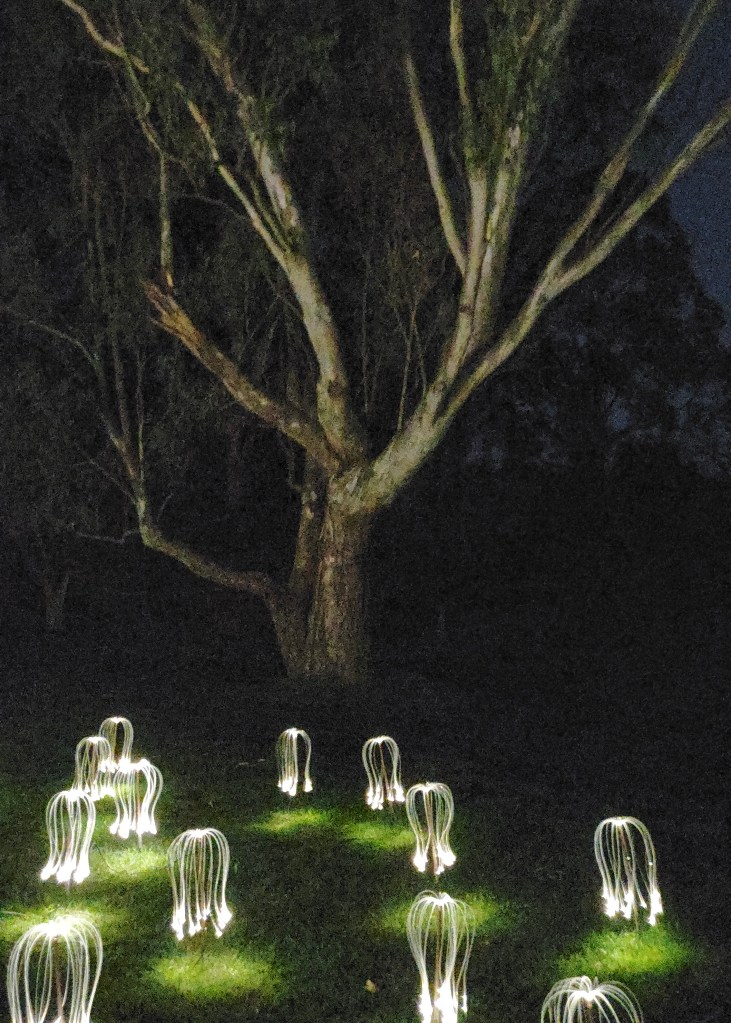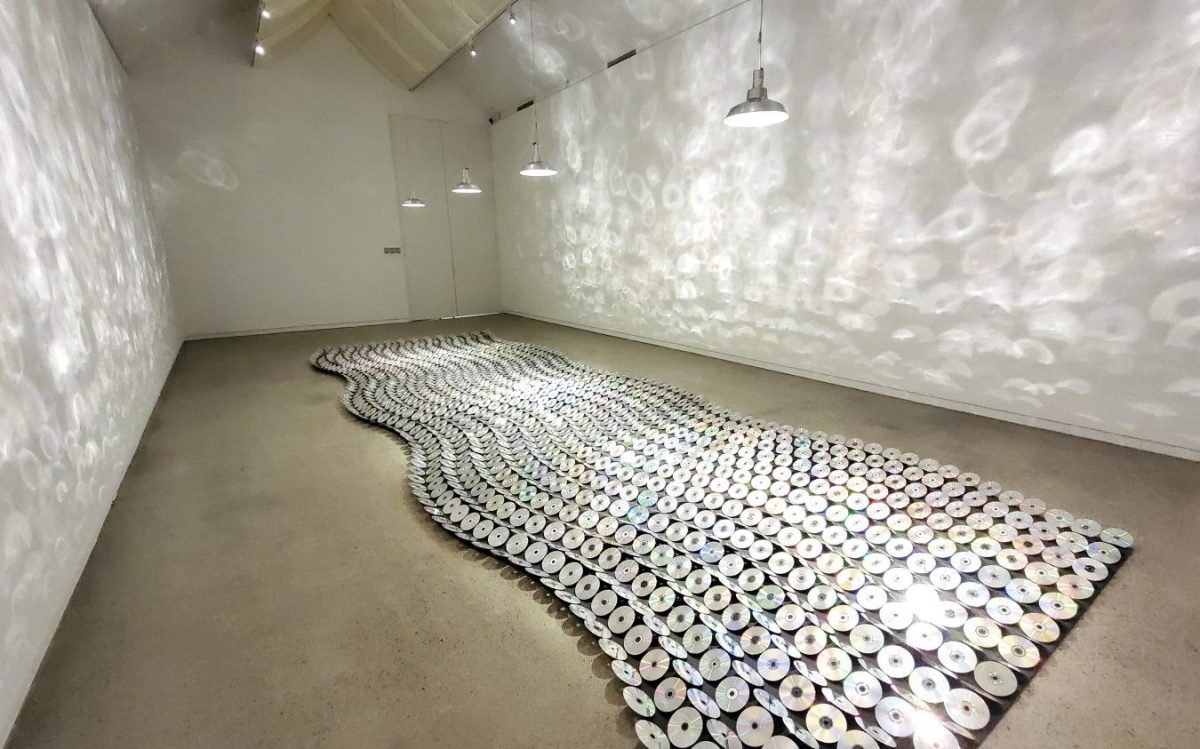Light is a subject of age-long fascination and curiosity: it changes our perception, stops us in awe and draws us towards its luminance.
For British/Australian artist Bruce Munro, light is core to his practice. He creates expansive installations that both mimic and extend beyond the natural phenomenon.
His first institutional exhibition in Australia at Heide Museum of Modern Art begins with the comical but easily missed Thank You for a Very Enjoyable Game (2016), a series of colourful grid paintings tracking the movement of a chess game in Kubrick’s famous film 2001: A Space Odyssey.
The jumping tiles make the viewer’s eyes work to identify the difference in composition between one painting and the next, installed across the length of the descending corridor leading into the main gallery.
Though not the work which Munro is best known for, Thank You provides an insightful segue into the second part of the exhibition, where he delves further into colour and shapes as points of reference for place and memory.
Read: Brit who gets Australian placemaking right
Upon entering the main space, one can see Ferryman’s Crossing I (2014) composed of recycled CDs that refract pulsing light across the gallery walls and shimmer with all its dazzling beauty.
It sits at the intersection between industrial/commercial materials and the sense of an bio-organic atmosphere, while presenting Munro’s fascination with Morse code and Siddhartha by poet Hermann Hesse (1877 – 1962), to which the lights pulsates.
Traversing through the exhibition space alongside Munro’s river of CDs, one might feel like a ferryman oneself, journeying across the boundaries between past and present.
In a darkened room at one end of the space, Ferryman’s Crossing II (2018) utilises the same motifs but through a different presentation. Dots and dashes representing Morse code of another passage in Siddhartha are projected onto a mirror laid flat on the ground.
Here one is submerged, as if underwater, in the glittering movements of light.
Whoever could understand this river and its mysteries, it seemed to him, would also understand many other things, many mysteries, all mysteries…
Excerpt from Siddhartha by German/Swiss poet Hermann Hesse
In the proceeding gallery, the Time and Place series showcase Munro’s dot works. They are assembled from circle snippets of photographs captured across different landscapes including Uluṟu, Pacific Road and the grounds of Heide itself.
In some ways, the hued colour blocks of Sunrise Road (2019) feels like an extension of Thank You, this time manifested into a time-lapse video. The location speaks to the first place Munro lived in Australia in the 1980s, around the coast in Palm Beach, Sydney.
Outdoor installation: Candent Spring (2022)

To Munro’s advantage, Melbourne nights darken around 5pm in the depths of winter, providing the perfect timeframe to witness Candent Spring (2022) in all its visual elegance.
The work is moulded to Heide’s outdoor sculpture park where one descends into the fairyland after catching glimpses of its light from afar.
Like a fine-tuned version of those fibre optic lights that captured our delight in childhood, individual ‘fireflies’ surround a central umbrella dome.
Despite the scope of the work’s illumination, running cords between the works may still pose a tripping hazard as kids and adults alike act on the irresistible urge to step through this fantasy landscape.
While visiting on the opening night, this reviewer noted minor tweaks which can make the experience safer and more accessible, such as lights pointing downwards on the footpath leading to the work and installing a lamp light on the artwork plaque.
Despite its enthralling beauty, filling a natural landscape with artificial light unavoidably creates priorities in our perception: what do we see and what are we not seeing instead?
Above it was a starry night, and below the land was ablaze. After a few still moments among Candent Spring, one feels like it has the power to bridge the understandings between ourselves and our surroundings; of land and of the Country that Munro is so deeply captivated by.
But does it? Does the work utilise its power to emphasise and make us rethink the land (and whose land) that we are in the presence of, or are they so imbued with Munro’s personal fascinations with literature, time, light and memory that we can only see the works for what they are – objects of beauty and finesse?
Bruce Munro: From Sunrise Road is on view until 16 October 2022 at Heide Museum of Art; open until 8pm Thursdays – Saturdays.





